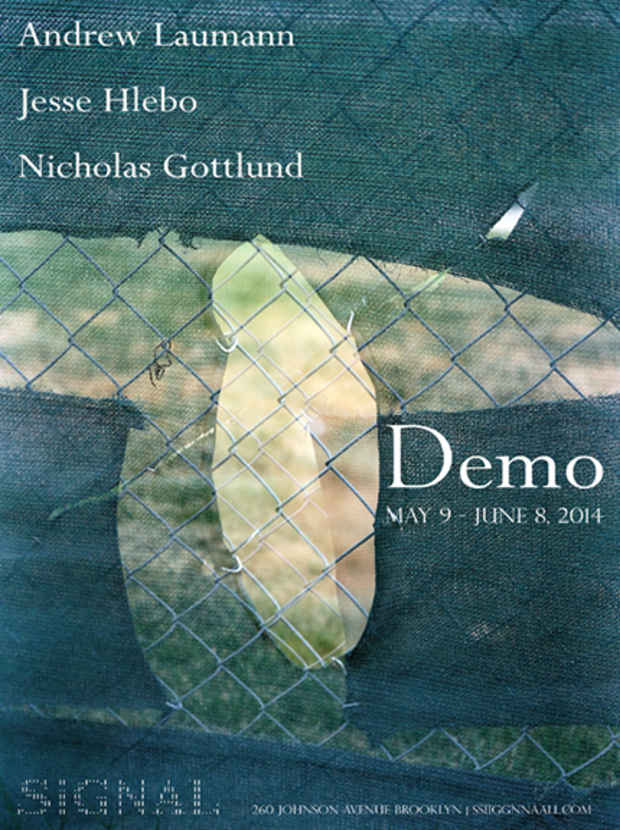“Demo” Exhibition
Signal

This event has ended.
Working through similar vocabularies of heavily processed industrial and architectural materials, the artists explore opportunities for the reassertion of human agency that emerge from the breakdown of systems, on scales ranging from manufacture error to social collapse.
Jesse Hlebo’s burned walls dominate the gallery floor–a mortared concrete wall, insulation, sheetrock, plywood, and drywall. The burned drywall still bears the uneven marks of structural embellishments that have been stripped away, further intimations of long-abandoned residential use, insistent apocalyptic narratives. The walls deaden the flow of sound and energy around them, monumental in their ruin. Like much of Hlebo’s sculptural and publishing work, the burned works are eschatological meditations; examinations of life in the Anthropocene, the geological epoch of global human domination.
Nicholas Gottlund’s work as a printer and publisher deeply informs his practice, and the materials he employs are often the incidental, surplus, and waste products of a printing house and bindery. The Errs is a 4-panel work across which a debossed pattern migrates, like the succeeding impressions made by the image cylinder of an offset press that has been misaligned. The “packing paper” surface is a material often used to back printing plates to give a heavier impression, usually unseen and irrelevant to the final product. A “press sheet” is displayed alongside, a sheet of paper upon which layer upon layer of information has been overprinted as a way to clean ink off the rollers when washing up the press.
Gottlund’s two cast-paper reliefs are made of recycled paper pulp, unique casts which receive the impression of a sheet of OSB plywood in the universal standard material size (4’x8’, 3/4” thick). One of the cheapest and most common building materials, OSB’s ubiquity often contributes to its invisibility. Here the dizzying complexity of composite wood products are rendered in exacting detail, individually preserved beyond their use-determined lifespan. Elsewhere, one bale of compressed paper scrap is unpacked into a handmade bench, exploding out of its container, while another remains tightly packed and bound for disposal. These are the waste products of Gottlund’s family bindery, scraps left over from trimmed magazines, books, and mailers, still bearing the printer’s informational markings.
Andrew Laumann exhibits four paintings, shredded assemblages that walk a line between painterly abstraction and sculptural accumulation. Constructed of discarded and surplus film posters, the materials are applied, peeled off, and re-applied to create surfaces that resemble the schizophrenic memories of wheat-pasted walls. While the surfaces recall those of his action-painting forebears, the methodology draws from a philosophy that re-asserts the human within an industrialized and image-saturated urban landscape.
Media
Schedule
from May 09, 2014 to June 08, 2014